131 Best Sights in Berlin, Germany
Sorry! We don't have any recommendations for Berlin right now.
We’ve compiled the best of the best in Berlin - browse our top choices for the top things to see or do during your stay.
Berlinische Galerie
Talk about site-specific art: all the modern art, photography, and architecture models and plans here, created between 1870 and the present, were made in Berlin (or in the case of architecture competition models, intended for the city). Russians, secessionists, Dadaists, and expressionists all had their day in Berlin, and individual works by Otto Dix, George Grosz, and Georg Baselitz, as well as artists' archives such as the Dadaist Hannah Höch's, are highlights. Special exhibitions are usually well attended and quite worthwhile.
Brandenburger Tor

Once the pride of Prussian Berlin and the city's premier landmark, the Brandenburger Tor was left in a desolate no-man's-land when the wall was built. Since the wall's dismantling, the sandstone gateway has become the scene of the city's Unification Day and New Year's Eve parties. This is the sole remaining gate of 14 built by Carl Langhans in 1788–91, designed as a triumphal arch for King Frederick Wilhelm II. Troops paraded through the gate after successful campaigns—the last time in 1945, when victorious Red Army troops took Berlin. The upper part of the gate, together with its chariot and Goddess of Victory, was destroyed in the war. In 1957 the original molds were discovered in West Berlin, and a new quadriga was cast in copper and presented as a gift to the people of East Berlin. A tourist information center is in the south part of the gate.
Recommended Fodor's Video
DDR Museum
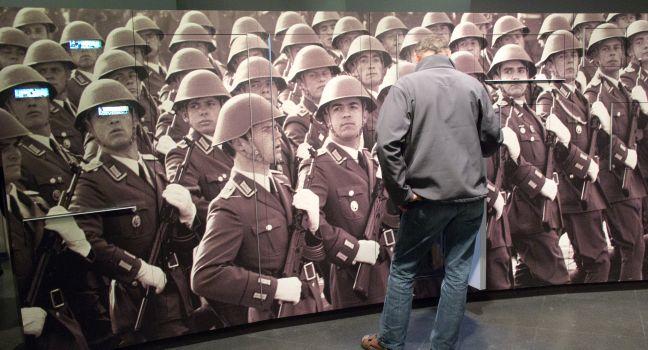
Half museum, half theme park, the DDR Museum is an interactive and highly entertaining exhibit about life during communism. It’s difficult to say just how much the museum benefits from its prime location beside the Spree, right across from the Berliner Dom, but it's always packed, filled with tourists, families, and student groups trying to get a hands-on feel for what the East German experience was really like. Exhibitions include a re-creation of an East German kitchen, all mustard yellows and bilious greens; a simulated drive in a Trabi, the only car the average East German was allowed to own; and a walk inside a very narrow, very claustrophobic interrogation cell.
Deutsches Historisches Museum

The museum is composed of two buildings. The magnificent pink, baroque Prussian arsenal (Zeughaus) was constructed between 1695 and 1730 and is the oldest building on Unter den Linden. It also houses a theater, the Zeughaus Kino, which regularly presents a variety of films, both German and international, historic and modern. The new permanent exhibits offer a modern and fascinating view of German history since the early Middle Ages. The Zeughaus and the permanent exhibits are closed for renovations until the end of 2025. Behind the arsenal, the granite-and-glass Pei building by I. M. Pei holds often stunning and politically controversial changing exhibits; it remains open during the Zeughaus renovations. The museum's café is a great place to stop and restore your energy.
East Side Gallery
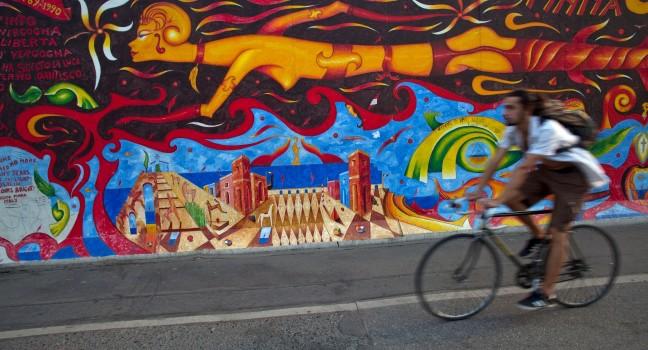
This 1-km (½-mile) stretch of concrete went from guarded border to open-air gallery within three months. East Berliners breached the wall on November 9, 1989, and between February and June of 1990, 118 artists from around the globe created unique works of art on its longest remaining section. One of the best-known works, by Russian artist Dmitri Vrubel, depicts Brezhnev and Honecker (the former East German leader) kissing, with the caption "My God. Help me survive this deadly love." The stretch along the Spree Canal runs between the Warschauer Strasse S- and U-bahn station and Ostbahnhof. The redbrick Oberbaumbrücke (an 1896 bridge) at Warschauer Strasse makes that end more scenic.
Gemäldegalerie
The Kulturforum's Gemäldegalerie reunites formerly separated collections from East and West Berlin. It's one of Germany's finest art galleries, and has an extensive selection of European paintings from the 13th to 18th centuries. Seven rooms are reserved for paintings by German masters, among them Dürer, Cranach the Elder, and Holbein. A special collection has works of the Italian masters—Botticelli, Titian, Giotto, Lippi, and Raphael—as well as paintings by Dutch and Flemish masters of the 15th and 16th centuries: Van Eyck, Bosch, Bruegel the Elder, and Van der Weyden. The museum also holds the world's second-largest Rembrandt collection. Portions of the Gemäldegalerie will be closed until at least October 2023 due to the installation of new lighting to better showcase the collection.
Gropius Bau
This magnificent palazzo-like exhibition hall first opened in 1881, and once housed Berlin's Arts and Crafts Museum. Its architect, Martin Gropius, was the great-uncle of Walter Gropius, the Bauhaus architect who also worked in Berlin. The international, changing exhibits on art and culture have included Painting in the US and USSR 1960–1990; a Yayoi Kusama retrospective; Art, Craft, and Concept in Berlin; and works from Korean artist Lee Bul.
Hamburger Bahnhof—Museum für Gegenwart
This light-filled, remodeled train station is home to a rich survey of post-1960 Western art. The permanent collection includes installations by German artists Joseph Beuys and Anselm Kiefer, as well as paintings by Andy Warhol, Cy Twombly, Robert Rauschenberg, and Robert Morris. An annex presents the Friedrich Christian Flick Collection, a collection of the latest in the world's contemporary art. The more than 1,500 works rotate, but you're bound to see some by Bruce Naumann, Rodney Graham, and Pipilotti Rist.
Humboldt Forum
This reconstruction of the former 15th-century palace that once stood on this site now houses a range of globally focused collections, including the Ethnological Museum and Asian Art Museum, which display more than 500,000 cultural objects from around the world; Humboldt University Lab, which explores science and society; and Berlin Global, which looks at Berlin's connection to the rest of the world through such topics as entertainment, fashion, war, and boundaries. The Forum also includes regularly changing temporary displays, such as the history of ivory and a children’s exhibit. Controversial from the start, due to the razing of the ‘70s-era East German Palast der Republik that formerly stood on the site and the display of colonial-era objects (some of which will be repatriated to their countries of origin), this sprawling museum makes a fascinating day out to see both the building itself and the exhibits inside. Note that you will need to buy individual timed tickets for each exhibit either online or onsite at the ticket office; it isn’t currently possible to buy one ticket to see everything. Though there are several cafés, make a reservation for Baret, the restaurant on the rooftop, if only to see one of the finest panoramic views of Berlin.
Jüdisches Museum Berlin
Using a mix of historical objects, art exhibitions, interactive exhibits, and virtual reality, the history of Germany's Jews from the Middle Ages through today is chronicled in the museum's permanent collection (revamped in 2020), from prominent historical figures to the evolution of laws regarding Jews' participation in civil society. A few of the exhibits document the Holocaust itself, but this museum celebrates Jewish life and history far more than it focuses on the atrocities committed during World War II. An attraction in itself is the highly conceptual building, designed by Daniel Libeskind, where various physical "voids" in the oddly constructed and intensely personal modern wing of the building represent the idea that some things can and should never be exhibited when it comes to the Holocaust. ANOHA Children's World, across from the main museum, contains a 7-meter (23-foot) tall circular wooden arc with more than 150 sculptured animals inside, all made from found objects.
Kulturforum
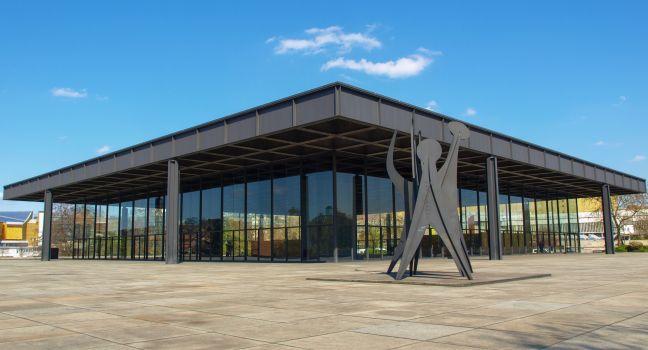
This unique ensemble of museums, galleries, and the Philharmonic Hall was long in the making. The first designs were submitted in the 1960s and the last building completed in 1998. Now it forms a welcome modern counterpoint to the thoroughly restored Prussian splendor of Museum Island, although Berliners and tourists alike hold drastically differing opinions on the area's architectural aesthetics. Whatever your opinion, Kulturforum's artistic holdings are unparalleled and worth at least a day of your time, if not more. The Kulturforum includes the Gemäldegalerie (Picture Gallery), the Kunstbibliothek (Art Library), the Kupferstichkabinett (Print Cabinet), the Kunstgewerbemuseum (Museum of Decorative Arts), the Philharmonie, the Musikinstrumenten-Museum (Musical Instruments Museum), the Staatsbibliothek (National Library), and the Neue Nationalgalerie (New National Gallery).
Memorial to the Murdered Jews of Europe
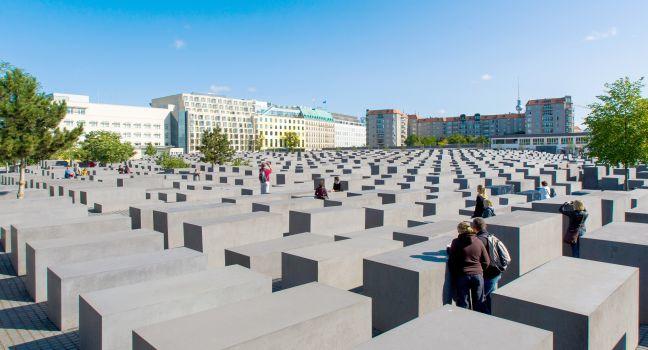
An expansive and unusual memorial dedicated to the 6 million Jews who were killed in the Holocaust, the Memorial to the Murdered Jews of Europe was designed by American architect Peter Eisenman. The stunning place of remembrance consists of a grid of more than 2,700 concrete stelae, planted into undulating ground. The abstract memorial can be entered from all sides and offers no prescribed path. An information center that goes into specifics about the Holocaust lies underground at the southeast corner. Just across Eberstrasse, inside the Tiergarten, is the
Museum Barberini
Museumsinsel
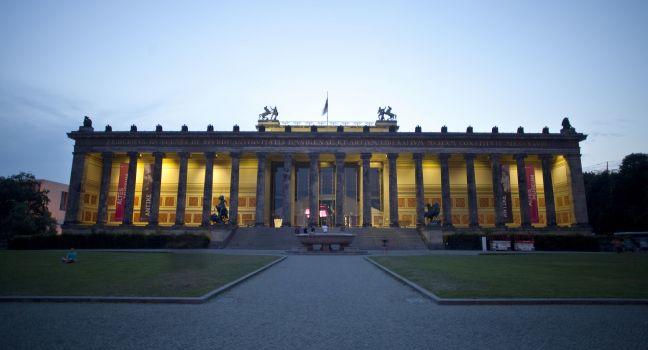
On the site of one of Berlin's two original settlements, this unique complex of five state museums is a UNESCO World Heritage site and a must-visit in Berlin. The museums are the
Neue Nationalgalerie
Bauhaus member Ludwig Mies van der Rohe originally designed this glass-box structure for Bacardi Rum in Cuba, but Berlin became the site of its realization in 1968; it closed in 2015 for a freshening up by British architect David Chipperfield, finally reopening in August 2021. Highlights of the collection of 20th-century paintings, sculptures, and drawings include works by expressionists Otto Dix, Ernst Ludwig Kirchner, and Georg Grosz, along with a fine collection of East German art plus works from the likes of Francis Bacon, Paul Klee, and Pablo Picasso. Temporary exhibitions, such as Alexander Calder's mobiles, dominate the top floor, while the excellent permanent collection sprawls over the bottom floor.
Neues Museum
Neues Palais
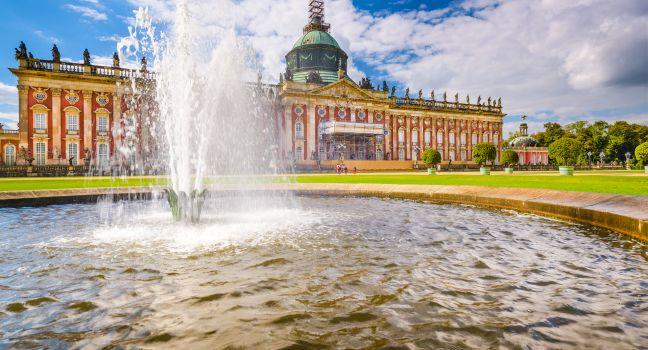
A larger and grander palace than Sanssouci, the Neues Palace stands at the end of the long avenue that runs through Sanssouci Park. It was built after the Seven Years' War (1756–63). Impressive interiors include the Grotto Hall with walls and columns set with shells, coral, and other aquatic decorations. The royals' upper apartments have paintings by 17th-century Italian masters. All visits are at scheduled times when you buy a ticket.
Palais Populaire
The reconstructed 18th-century Prinzessinnenpalais (Princesses’ Palace) now houses selections of Deutsche Bank’s contemporary art holdings, which rotate several times a year. Past exhibitions include Ways of Seeing Abstraction, works from German figurative painter K.H. Hödicke, and international photography from the 1970s to the present, along with shows featuring Deutsche Bank's “artists of the year.” Though the art selections may be compact, they’re most often provocative and worthwhile. Take an art break at the attached LePopulaire café, which serves up salads, sandwiches, and heartier mains for lunch or snacks.
Pergamonmuseum
The Pergamonmuseum is one of the world's greatest museums and its name is derived from its principal display, the Pergamon Altar, a monumental Greek temple discovered in what is now Turkey and dating from 180 BC. The altar was shipped to Berlin in the late 19th century. Equally impressive are the gateway to the Roman town of Miletus, the Ishtar Gate, and the Babylonian processional way. The entire museum is closed for refurbishment until 2027, when parts of it will reopen, including the famed altar; the rest of the museum isn't scheduled to reopen until 2037. Until then, visitors can see Das Panorama, 360-degree visuals of the ancient city of Pergamon designed by artist Yadegar Asisi and combined with a selection of original sculptures, in a temporary pavilion on Am Kupfergraben, across from Museuminsel.
Reichstag
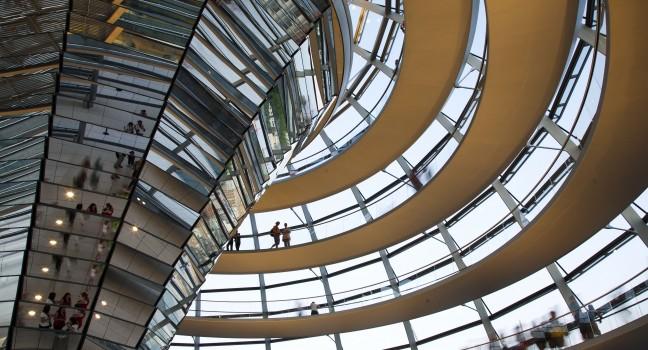
The Bundestag, Germany's federal parliament, returned to its traditional seat in the spring of 1999 for the first time since 1933. British architect Sir Norman Foster lightened up the gray monolith with a glass dome: you can circle up a gently rising ramp while taking in the rooftops of Berlin and the parliamentary chamber below. At the base of the dome is an exhibit on the Reichstag's history. Completed in 1894, the Reichstag housed the imperial German parliament and later served a similar function during the ill-fated Weimar Republic. On the night of February 27, 1933, the Reichstag was burned down in an act of arson, a pivotal event in Third Reich history. It was rebuilt but again badly damaged in 1945. All visitors must register their names and birth dates in advance for a visit to the dome, either with or without a 90-minute guided tour, which you can do online; space permitting, you can also book a dome visit at least two hours in advance at the visitors' service on the south side of Schiedemannstrasse, near the Reichstag. A riverwalk with great views of the government buildings begins behind the Reichstag.
Sammlung Boros
This private collection has become one of Berlin’s star attractions, thanks to its unusual location inside a hulking WWII bunker in Mitte. Contemporary art collector Christian Boros bought the bunker in 2003 to house his art, and built a glass penthouse on top to house his family. The best works are those created specifically for the space by well-known artists such as Ai Weiwei, Olafur Eliasson, and Tomás Saraceno. Since this is a private home, admission is only allowed on guided tours, which take place Thursday to Sunday and can booked online. The tours are popular, so book as early as you can (months in advance).
Sammlung Boros
Both an historic and a modern Berlin attraction all at once, the unique Sammlung Boros houses a private contemporary art collection inside a renovated World War II bunker. Weekend-only visits are only possible by 90-minute guided tour, which are extremely popular and must be booked online weeks in advance. Tours include both detailed descriptions of the artists and artwork on display, and also the fascinating history and architecture of the bunker itself, which at varying times was used as a war prison, fruit storage facility, and notorious nightclub.
Schloss Sanssouci
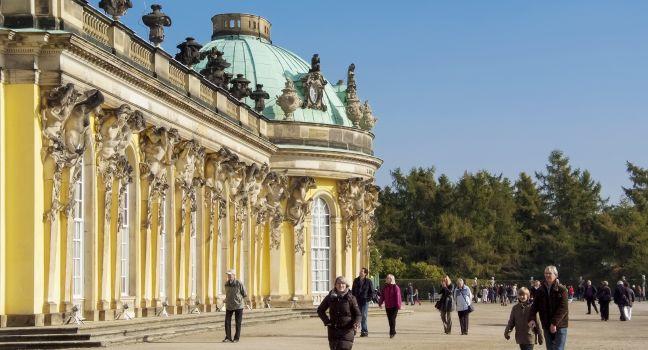
Prussia's most famous king, Friedrich II—Frederick the Great—spent more time at his summer residence,
Staatsoper Unter den Linden
Frederick the Great was a music lover and he made the Staatsoper Unter den Linden, on the east side of Bebelplatz, his first priority. The lavish opera house was completed in 1743 by the same architect who built Sanssouci in Potsdam, Georg Wenzeslaus von Knobelsdorff. The house reopened in late 2017 after a major seven-year renovation. There are guided 90-minute tours of the opera house's interior on weekends (book online), but they are offered in German only.
Tempelhofer Feld
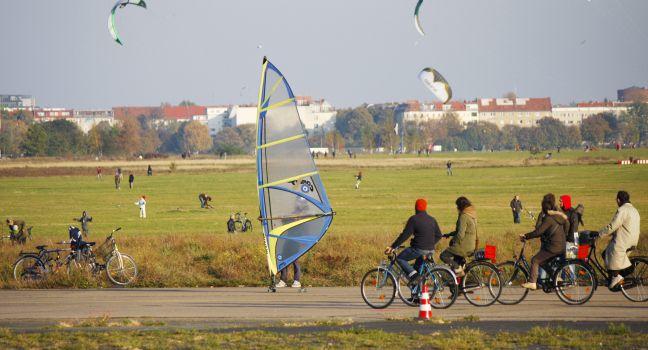
Of all Berlin’s many transformations, this one—from airport to park—might be the quickest. The iconic airport (it was the site of the 1948–49 Berlin airlift) had its last flight in 2008. Only two years later, it opened as a park, complete with untouched runways. It's now one of the city’s most beloved and impressive outdoor spots, where bikers, skaters, kite flyers, urban gardeners, picnickers, and grillers all gather. Although the Nazi-era airport buildings are not open for wandering, you can explore them on a two-hour tour (book online).
Topographie des Terrors
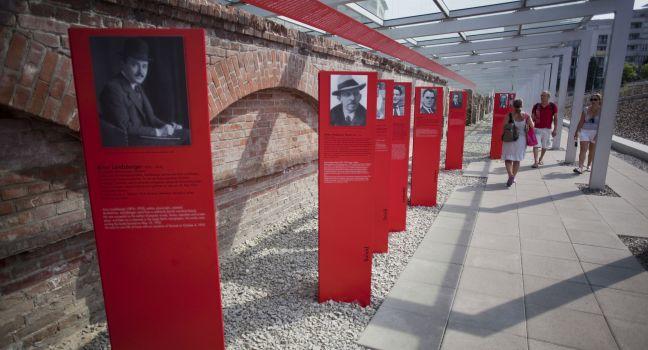
Topographie des Terrors is partially an open-air exhibit, fully exposed to the elements, and partially a stunning indoor exhibition center, where you can view photos and documents explaining the secret state police and intelligence organizations that planned and executed Nazi crimes against humanity. The fates of both victims and perpetrators are given equal attention here. The outdoor cellar remains of the Nazis' Reich Security Main Office (composed of the SS, SD, and Gestapo) uses photos, newspaper articles, and other documents to examine National Socialist policy in Berlin between 1933 and 1945.
48 Stunden Neukölln
Alexanderplatz
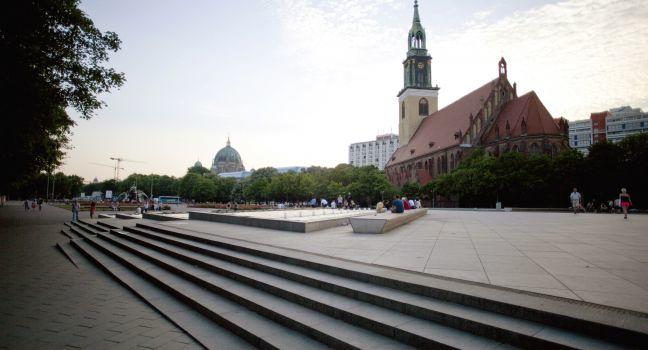
This bleak square, bordered by the train station, the Galeria Kaufhof department store, and the 37-story Park Inn by Radisson Berlin Alexanderplatz hotel, once formed the hub of East Berlin and was originally named in 1805 for Czar Alexander I. German writer Alfred Döblin dubbed it the "heart of a world metropolis" (a quote from his 1929 novel Berlin Alexanderplatz is written on a building at the northeastern end of the square). Today it's a basic center of commerce and the occasional festival. The unattractive modern buildings are a reminder not just of the results of Allied bombing but also of the ruthlessness practiced by East Germans when they demolished what remained. A famous meeting point in the south corner is the World Time Clock (1969), which even keeps tabs on Tijuana.
Alter Markt
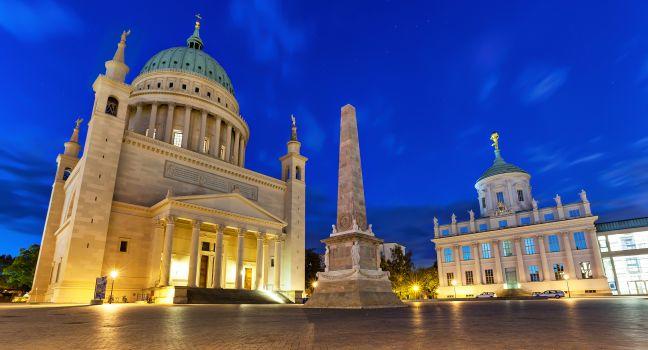
The hub of Potsdam's historical center was home to the city's baroque palace for three centuries. The area was heavily damaged by Allied bombing in World War II and then further destroyed by the East German regime in 1960. After reunification, Potsdam decided to rebuild its palace, and the re-created structure, with a combination of modern and historic elements, has housed the state parliament since 2013. Thanks to private donors, a magnificent replica of the Fortunaportal, or Fortune's Gate, now stands proudly at the center of the square. A gilded figure of Atlas tops the tower of the Altes Rathaus (Old Town Hall), built in 1755 in the model of an Italian palazzo, its dome meant to mimic the Pantheon's in Rome. The Potsdam Museum contains a large collection of paintings, photographs, and historical objects. Karl Friedrich Schinkel designed the Alter Markt's domed Nikolaikirche (St. Nicholas Church), which was also heavily damaged in the war and only reopened in 1981 after extensive renovations.



